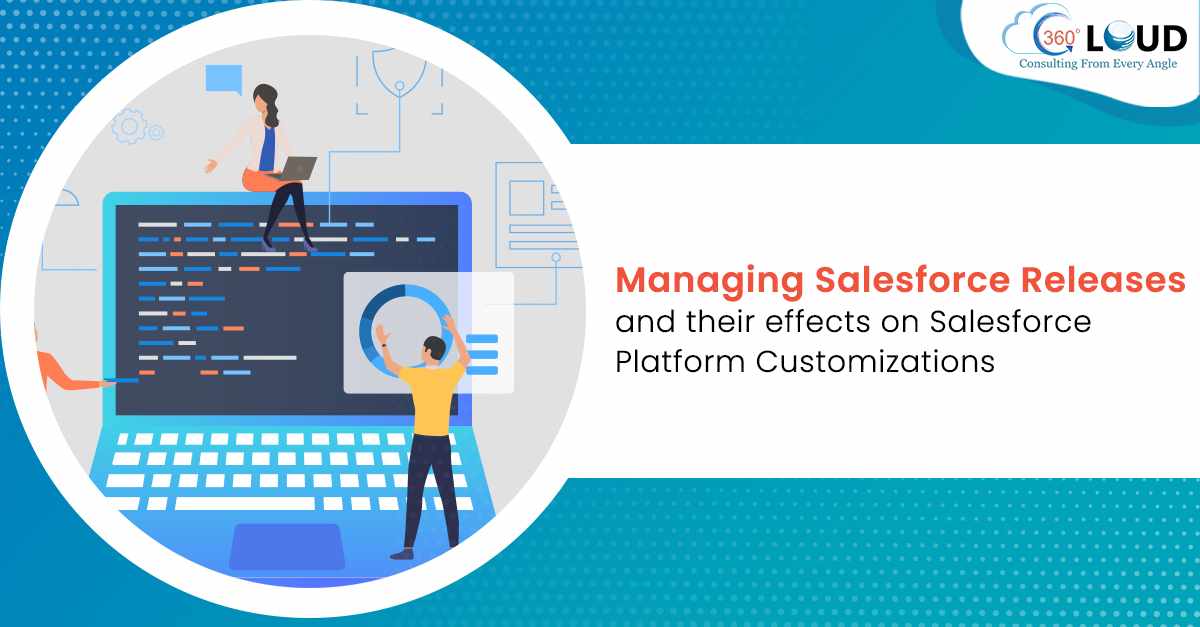Managing Salesforce Releases and their effects on Platform Customizations
06 Sep 2021
Table of Contents

What makes Salesforce so impressive is the ability to allow users to build highly functional enterprise-level applications and customizations without having to write the code. But these functionalities come with a cost. With more functionalities, users might face issues regarding managing Salesforce releases and source control.
Each organization would have different business cultures and release requirements. The need is to always stick with the best practices. The goal of Salesforce release management after performing customization is to maintain consistency of your resource-independent processes that will help to achieve optimal business value.
Table of Contents
Ways for Efficiently Managing Salesforce Releases
The layered development of Salesforce customizations might end up in a complex Salesforce environment for a business. This can complicate release management, restricting users from using Salesforce to its full potential. But as long as Salesforce developers follow these best practices of Salesforce release management, you should not face any problems.
1. Divide Projects into Groups
Your Salesforce development pipeline would have many projects of different complexity levels. You can separate these projects into three categories to determine the amount of attention they need:
- Patch: These include simple changes that won’t affect the complete functionality of Salesforce. They would only need the basest levels of release management.
- Minor Release: These are the changes that will have a limited impact on your Salesforce org.
- Major Release: These releases would have a significant impact on the system. They are likely to involve multiple dependencies.
Managing releases with Salesforce projects would become easier when you know the impact of each kind of release.
2. Define Roles and Expectations
Take time to assign relevant team members to different tasks. It is important to assign roles to the team with the best skills, ensuring the team members know everything that’s expected when managing Salesforce releases.
The team should be aware of the scope, timelines, and measurable deliverables and should be able to communicate the expectations and goals efficiently.
3. Follow a Change Management Process
To ensure sound release management, the team needs to follow a reliable and foolproof change management process. The Salesforce developers would make changes or create features in their sandbox, and these changes would be moved to the QA environment. QA team will then test features according to the requirements.
For efficient change management, all the components would be reviewed together. It includes maintaining requirement documents, test cases, and the latest code.
4. Automate Processes Wherever Possible
Many of the tasks for successful Salesforce development and deployment would be monotonous and redundant, which can be cut down with automation. You can streamline different tasks throughout the pipeline using automation to eliminate errors and inaccuracy.
With automated release management, you can access many essential tools and personalize them according to your business needs. This will include services like continuous integration, verifying code health, data backups, and more.
Take Expert Help for Managing Salesforce Releases
Salesforce release management is a way to streamline your business operations, making your Salesforce customizations work with a release. Implying all the above-mentioned points will help you manage releases efficiently. But when working with a complex Salesforce environment, hire certified Salesforce experts to get the job done.
Get the best help for managing Salesforce release and its effects on your Salesforce org. Contact us to discuss your business architecture and needs.
About the author
Editorial Team – 360 Degree CloudThe Editorial Team at 360 Degree Cloud brings together seasoned marketers, Salesforce specialists, and technology writers who are passionate about simplifying complex ideas into meaningful insights. With deep expertise in Salesforce solutions, B2B SaaS, and digital transformation, the team curates thought leadership content, industry trends, and practical guides that help businesses navigate growth with clarity and confidence. Every piece we publish reflects our commitment to delivering value, fostering innovation, and connecting readers with the evolving Salesforce ecosystem.
Recent Blogs
 Salesforce Services
Salesforce Services
How Salesforce Managed Services Optimizes Your Licenses
For many organizations, the annual Salesforce renewal process feels less like a strategic investment and more like a mandatory expense hike. The harsh truth is…
Read More Salesforce Clouds
Salesforce Clouds
Top 10 Salesforce Integration Tools to Connect Your Tech Stack
Gone are those days when businesses used to rely on one or two systems to manage their operations. In this modern tech ecosystem, businesses use…
Read More Salesforce Clouds
Salesforce Clouds
Pardot Salesforce Integration: How Do Both Platforms Work Together?
There has been a constant division between Sales and Marketing teams in many organizations that can directly bring harm to the business. The marketing team keeps…
Read MoreReady to Make the Most Out of Your Salesforce Instance?
Our Salesforce aces would be happy to help you. Just drop us a line at contact@360degreecloud.com, and we’ll take it from there!
Subscribe to our newsletter
Stay ahead with expert insights, industry trends, and exclusive resources—delivered straight to your inbox.



